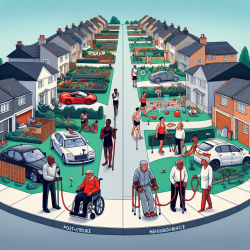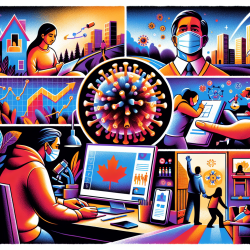Stroke recovery is a multifaceted process influenced by various factors, including socioeconomic status. Recent research highlights the significant impact of neighbourhood income on the participation levels of stroke survivors in their daily lives. This blog post delves into these findings and offers guidance for practitioners seeking to enhance their support for stroke survivors, particularly those from low-income areas.
The Research Findings
The study titled Very low neighbourhood income limits participation post stroke: preliminary evidence from a cohort study, conducted by Egan et al., explores how very low neighbourhood income affects participation among community-dwelling stroke survivors over two years. The research involved 67 participants who had experienced their first stroke and were discharged to the community. Participation was measured using the Reintegration to Normal Living Index (RNLI), while income was assessed based on median neighbourhood annual family income.
The study found that participants from very low-income neighbourhoods had RNLI scores approximately 25% lower than those from higher-income areas at each follow-up period. This disparity persisted even after controlling for factors such as discharge FIM™ scores, walking ability, gender, self-rated health, age, and emotional well-being. These results suggest that very low neighbourhood income independently affects participation levels post-stroke.
Implications for Practitioners
The findings underscore the importance of considering socioeconomic factors when supporting stroke survivors. Here are some strategies practitioners can implement:
- Tailored Interventions: Develop personalized rehabilitation plans that account for the socioeconomic challenges faced by individuals from low-income neighbourhoods.
- Community Engagement: Collaborate with local organizations to improve access to resources and activities that promote participation in life situations.
- Advocacy: Advocate for policies that address health disparities and improve resource allocation in underserved communities.
- Cultural Competency: Enhance understanding of cultural and socioeconomic contexts to provide more effective and empathetic care.
- Further Research: Encourage ongoing research into the relationship between socioeconomic status and stroke recovery to inform evidence-based practices.
The Path Forward
This research highlights the need for a holistic approach to stroke rehabilitation that considers both medical and contextual factors. By addressing the unique challenges faced by individuals in very low-income neighbourhoods, practitioners can help bridge the gap in participation and improve overall quality of life for stroke survivors.
To read the original research paper, please follow this link: Very low neighbourhood income limits participation post stroke: preliminary evidence from a cohort study.










